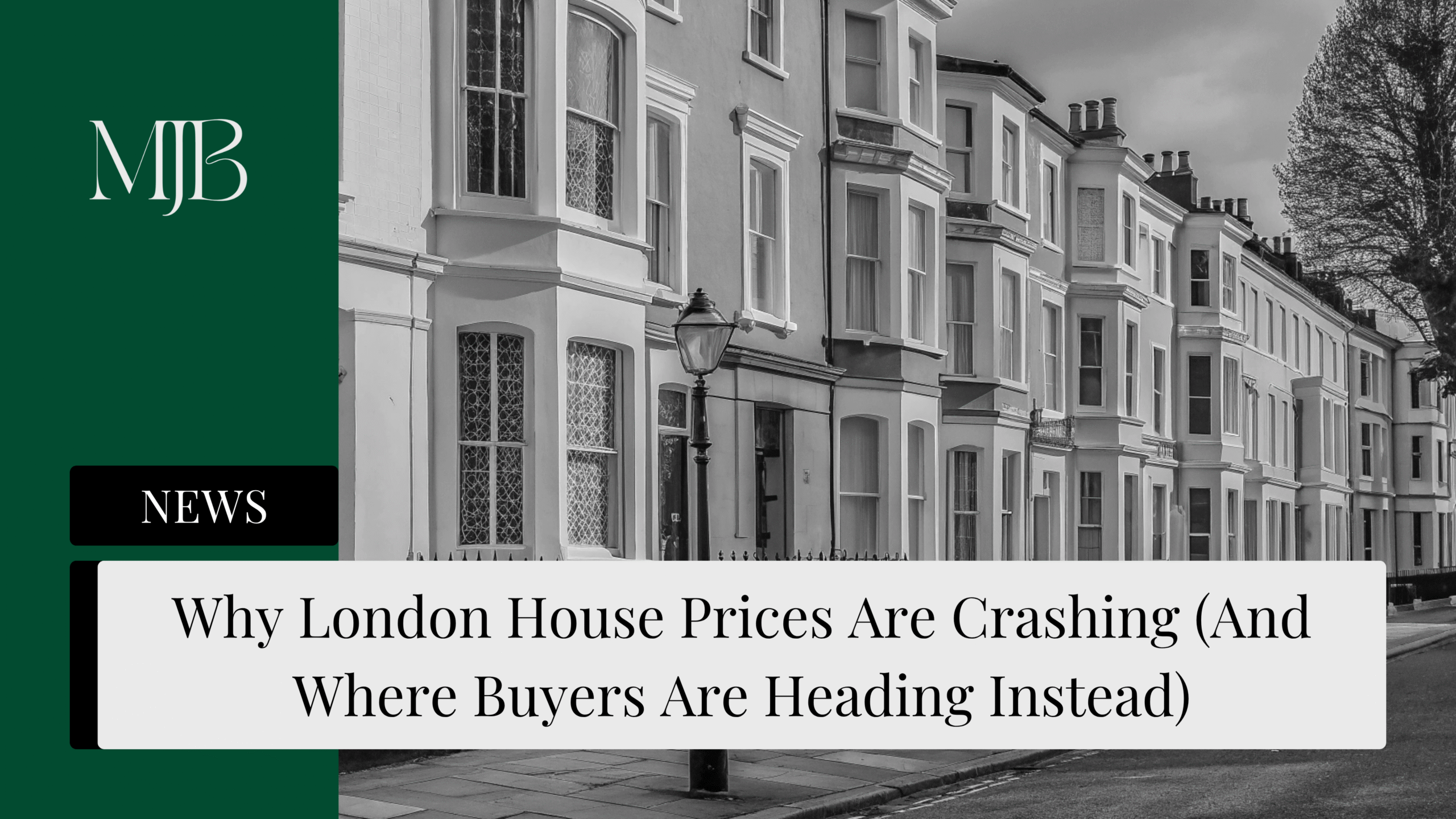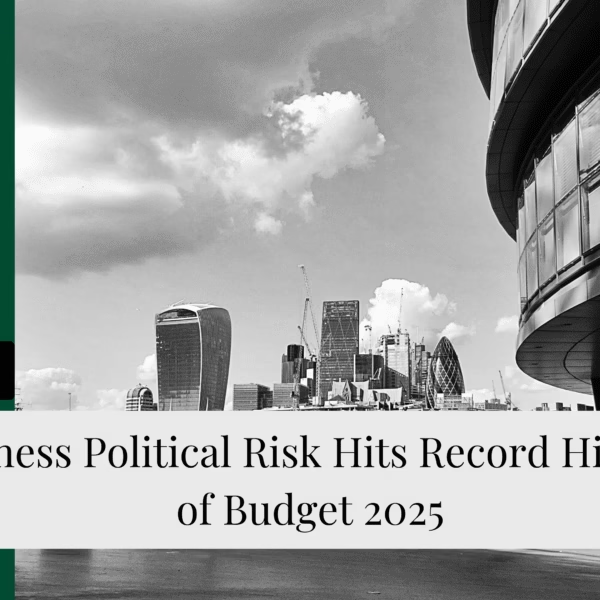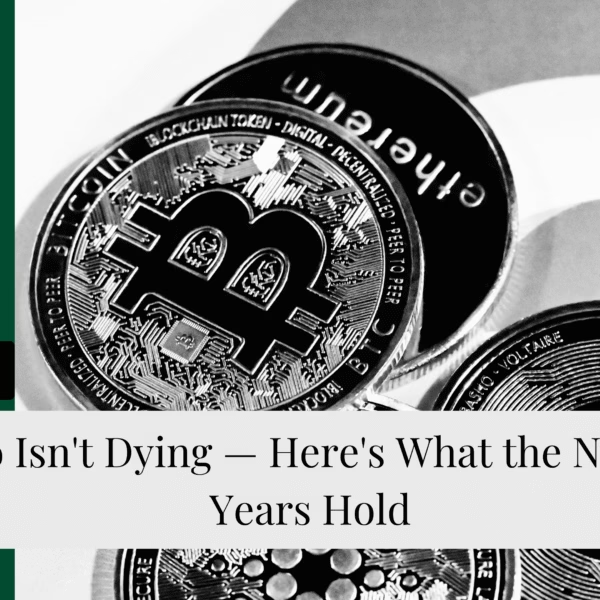London’s property market is having a rough time. The City has watched average house prices plummet 36% since 2018, and July brought another punch to the gut with inner London prices dropping 2.1% month-on-month. What’s behind this dramatic fall? It’s a blend of tax hikes hitting first-time buyers and wealthy non-doms fleeing the capital. Let’s look at why London’s housing market is struggling and what it means for buyers and sellers.
The Tax Trap That’s Crushing First-Time Buyers
April’s stamp duty changes removed relief for first-time buyers, pushing the median purchase over the tax threshold. That means an extra £6,250 bill that only 15% of London first-timers can actually afford, according to Fairview Homes.
With London’s house price-to-earnings ratio sitting at a whopping 8.22 (compared to 6.55 nationally), affordability was already brutal. Now it’s practically impossible for most young buyers.
The result? They’re voting with their feet and heading to cities like Birmingham, Bristol, and Manchester where their money goes further.
Supply and Demand: The Scales Have Tipped
All those delayed sellers who sat tight during market uncertainty? They’re back. Combined with fewer buyers, London now has a serious oversupply problem. Rightmove reports 16-19% more homes for sale compared to last year.
“There’s an increase in people choosing the rest of the UK over the capital, and property values in these areas are dropping significantly,” says Dave Sayce from Compare My Move. Translation: unless prices drop dramatically, average buyers are priced out.
Non-Doms Are Saying Goodbye
London’s luxury market traditionally relied on wealthy international buyers attracted by generous tax perks and world-class schools. But changes to non-dom tax rules have spooked this crowd.
Prime Central London values fell 3.7% year-on-year to June, according to Savills. These premium properties are now 22.4% below their 2014 peak. Ouch.
“We’ve seen the number of movers from London slip back as the commuter belt contracts,” notes Lucian Cook from Savills. The silver lining? Needs-based buyers are still active, keeping some momentum in suburban markets.
What This Means for the Market
London’s property correction reflects a broader shift. Sky-high prices, tax increases, and better value elsewhere have created a buyer’s market in the capital for the first time in years.
For sellers, it’s time to get realistic about pricing. For buyers with deep pockets, there are opportunities emerging. And for everyone else? The exodus to more affordable UK cities continues.
Ready to explore your options? Whether you’re buying, selling, or relocating, understanding these market dynamics is crucial for making smart property decisions in 2025.
FAQ
Q1: How much have London house prices fallen recently?
A: Inner London prices dropped 2.1% in July alone, with overall London prices down 1.5%. The City of London has seen a 36% decline since 2018.
Q2: Why are first-time buyers struggling more now?
A: April’s stamp duty changes removed relief for first-time buyers, adding an average £6,250 to purchases. Only 15% of London first-timers can afford this extra cost.
Q3: Which cities are benefiting from London’s exodus?
A: Birmingham, Bristol, and Manchester are attracting buyers seeking better value. These cities offer significantly lower house price-to-earnings ratios than London’s 8.22.
Q4: What’s happening to luxury London properties?
A: Prime Central London values fell 3.7% year-on-year and are 22.4% below their 2014 peak. Changes to non-dom tax rules have reduced international buyer interest.
Q5: Is this a good time to buy in London?
A: For cash-rich buyers, yes – it’s becoming a buyer’s market with 16-19% more properties available. However, affordability remains challenging for average earners.
DISCLAIMER
Effective Date: 15th July 2025
The information provided on this website is for informational and educational purposes only and reflects the personal opinions of the author(s). It is not intended as financial, investment, tax, or legal advice.
We are not certified financial advisers. None of the content on this website constitutes a recommendation to buy, sell, or hold any financial product, asset, or service. You should not rely on any information provided here to make financial decisions.
We strongly recommend that you:
- Conduct your own research and due diligence
- Consult with a qualified financial adviser or professional before making any investment or financial decisions
While we strive to ensure that all information is accurate and up to date, we make no guarantees about the completeness, reliability, or suitability of any content on this site.
By using this website, you acknowledge and agree that we are not responsible for any financial loss, damage, or decisions made based on the content presented.






